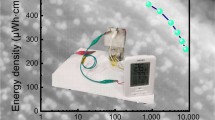Abstract
The study of charge regulation mechanism in C4F7N/CO2 is of significant importance for advancing the applications of C4F7N/CO2. In this study, coating samples with varying SiC content were fabricated using conventional brush coating method, and the surface charge distribution of these samples under negative voltage was measured using a surface potential measurement system. The results revealed that in the absence of coating, the surface charge in C4F7N/CO2 exhibited bipolar distribution, with a large number of negative charges concentrated near the high voltage electrode and a small number of positive charges concentrated near the ground electrode. When coatings existed, the pattern of surface charge distribution changed. Under the same voltage, with the increase of SiC content, the maximum potential along the electrode centerline first increased and then decreased, reaching a decrease of 70.7% at 30% wt of SiC content, and charges on both sides of the electrode continuously increased. Through the measurement of coating material's conductivity and trap distribution characteristics, it was found that the coating material reduced the surface trap energy level, increased the trap density, and exhibited nonlinear conductivity characteristics. It is suggested that nonlinear conductivity played a role in equalizing the electric field, reducing the gas ionization in C4F7N/CO2. Lower trap energy level and higher conductivity will promote charge gas neutralization and accelerate surface conduction. The combined effect of both factors effectively suppresses the charge accumulation at the electrode front origin. However, the increased conductivity and trap density also promotes charge injection and charge-captured possibility, as a result of the lack of dissipation channels, the charges at both sides of the electrode increase with the increase of SiC content.
Access this chapter
Tax calculation will be finalised at checkout
Purchases are for personal use only
Similar content being viewed by others
References
Deng J, Dong J, Chen J et al (2022) Research advances in interface insulation characteristics of SF6 alternative gases. High Voltage Eng 48(02):661–673 (in Chinese)
**ao X, Shi XY, Lin JT et al (2023) Analysis on the control strategy of the strong greenhouse insulating gas SF in high-voltage electrical equipment under the goal of “emission peak and carbon neutrality. Proceedings of the CSEE 43(01):339–358 (in Chinese)
Qi B, Gao CJ, Zhao LJ et al, Influence of surface charge on flashover voltage of gas insulated substation basin insulator under AC and DC voltage. High Voltage Eng 43(3):915–922 (in Chinese)
Li CY, Zhu Y, Hu J et al (2020) Charge cluster triggers unpredictable insulation surface flashover in pressurized SF6. J Phys D Appl Phys 54(1):015308
Xue JY, Chen JH, Wang H et al (2019) The regulation mechanism of SiC/epoxy coatings on surface charge behavior and flashover performance of epoxy/alumina spacers. J Phys D Appl Phys 52(40):405502
Xue JY, Chen JH, Dong JH et al (2020) Enhancing flashover performance of alumina/epoxy spacers by adaptive surface charge regulation using graded conductivity coating. Nanotechnology 31(36):364002
Wang WQ, Zhao HC, GAO Y et al (2023) Surface charge suppression experimental analysis of disc insulator based on zoning coating. In: Proceedings of the CSU-EPSA. https://doi.org/10.19635/j.cnki.csu-epsa.001105. Accessed 21 Apr 2023 (in Chinese)
Shen WW, Mu HB, Zhang GJ et al (2013) Identification of electron and hole trap based on isothermal surface potential decay model. J Appl Phys 113(8):083706
Pan ZJ, Pan C, TangJ et al (2022) Influence of SiC/Epoxy coating on surface charging phenomenon at DC voltage—Part I: charge accumulation. IEEE Trans Dielectr Electri Insul 29(4):1333–1342
Xue J, Wang H, Chen JH et al (2018) Accumulation and decay characteristics of surface charges on epoxy composite insulation in SF6 under DC voltage. High Voltage Eng 44(12):3824–3832 (in Chinese)
Acknowledgements
This work is supported by Open Fund of State Key Laboratory of Power Grid Environmental Protection (No. GYW51202201416).
Author information
Authors and Affiliations
Corresponding author
Editor information
Editors and Affiliations
Rights and permissions
Copyright information
© 2024 Bei**g Paike Culture Commu. Co., Ltd.
About this paper
Cite this paper
Sun, P. et al. (2024). Mechanism of Surface Charge Regulation with Nonlinear Conductivity Coating in C4F7N/CO2 Mixture. In: Dong, X., Cai, L. (eds) The Proceedings of 2023 4th International Symposium on Insulation and Discharge Computation for Power Equipment (IDCOMPU2023). IDCOMPU 2023. Lecture Notes in Electrical Engineering, vol 1103. Springer, Singapore. https://doi.org/10.1007/978-981-99-7413-9_14
Download citation
DOI: https://doi.org/10.1007/978-981-99-7413-9_14
Published:
Publisher Name: Springer, Singapore
Print ISBN: 978-981-99-7412-2
Online ISBN: 978-981-99-7413-9
eBook Packages: EnergyEnergy (R0)




